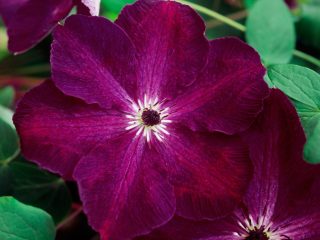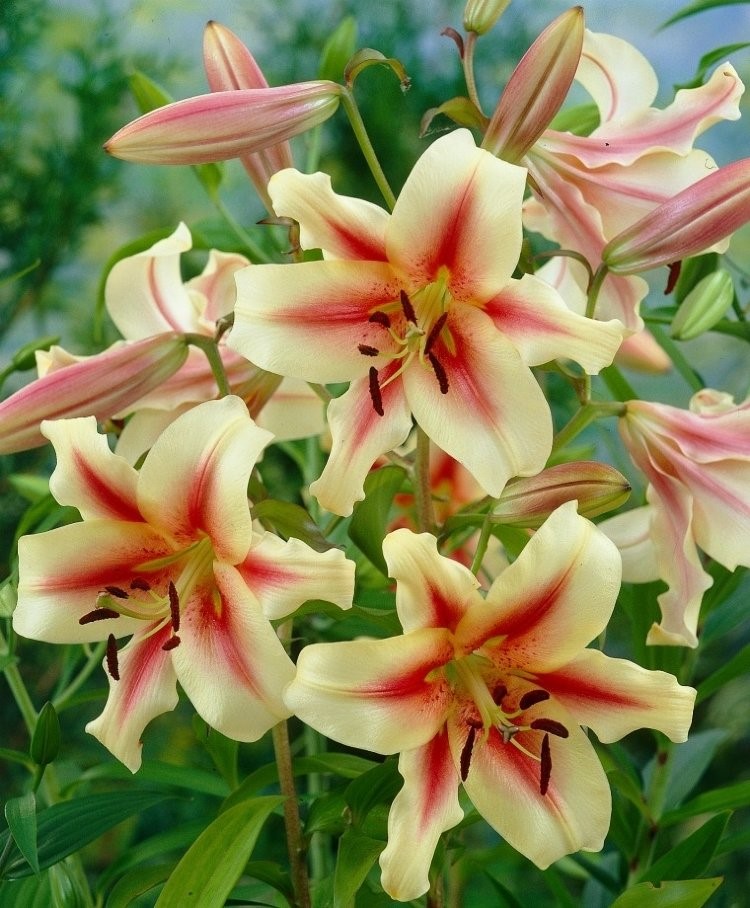Content
Lily Knight Rider is an unusual variety with dark petals that can attract the attention of any gardener. The plant has good winter hardiness and can be grown in harsh Russian regions. Knight Rider is unpretentious and it will not be difficult for the owner to care for him.
History of origin
Unfortunately, there is no publicly available information about the history of the creation of the variety. He was probably bred among the people. Knight Rider is not included in the State Register.
Description of Lily Knight Rider with photo
The name of the lily translates as “Night Rider”. The culture belongs to the group of Asian hybrids and is a decorative variety of compact size.

The height of the bush reaches no more than 1.3 m
The leaves have the traditional lanceolate shape for lilies. Night Rider's stems are strong enough to withstand winds. However, the main beauty is not in them, but in the colors of the petals.
The black flowers of the plant dissolve in the darkness and appear covered with dew at sunrise. This picture looks amazing. Nightrider is the only black and burgundy lily that has perfectly adapted to cold climates.
Features of flowering
Lily flowers have a glossy surface and are very pleasant to the touch.The buds are formed in mid-summer and grow up to 15 cm in diameter.
Pros and cons of the variety
Lily Night Rider is an ornamental crop that is actively used by designers in creating beautiful landscapes. The plant looks unusual in bright plantings - it is used as a background and placed in front.

The crop is not attacked by pests and has good disease resistance
Pros:
- large flower diameter;
- a huge number of buds;
- winter hardiness;
- universal application;
- can be grown for cutting;
- contrast between green shoots and dark petals;
- unpretentiousness.
Minuses:
- no smell.
Landing Features
It is recommended to grow the Knight Rider lily in illuminated areas - in this case, the gardener will find the flowering in all its glory. In addition, the plant itself loves sunlight. If the area does not allow the lily to be planted in the sun, planting can be done in light shade.
Knight Rider is unpretentious to soil: it can grow in alkaline, neutral soil with a loose or hard structure. However, areas with acidic soil should be avoided. In such conditions, fewer flowers are formed. For alkalization, 200 g of wood ash is added to the substrate (a portion is enough for 1 sq. m). If the soil is dense, the planting site is dug up and mixed with sand and peat.
Bulbs are planted in the fall, before frost arrives, or in the spring, when the temperature is above +10 degrees. Lily Knight Rider is characterized by a strong root system that grows quickly after planting. Therefore, the site is dug up to 35 cm in advance.

Sand, compost and peat are used as initial feeding - the components are mixed in one bucket and poured into the bottom of the pit
Knight Rider bulbs are planted so that there is 30 cm of space between adjacent specimens. Before burying samples, take care of the drainage system. It can be ordinary sand or stones. When planting, the roots are straightened and covered with sand as an additional measure. The final stage will be abundant watering of the area.
Care instructions
A lily will delight the gardener with lush flowering only with regular care. However, care can be called standard for all Asian hybrids; they are not very demanding. During the growing season, Knight Rider is watered, preventing the soil from drying out. At the same time, make sure not to over-wet the area, because the lily does not like swampy substrates.
Lily Night Rider does not like close proximity to other, even related plants. Therefore, the planting site must be weeded. To increase the comfort of the flower, the root zone is mulched with compost.
It is not recommended to use fresh manure as fertilizer - it is harmful to the Knight Rider lily. By the time of budding, minerals (preferably soluble) are used, and at the end - organic matter.
Tall bushes are tied up, as the stems cannot always cope with the load. Withered specimens are removed. By the onset of cold weather, the stems are cut off, leaving up to 1/3 of the length.

Despite its high resistance to frost (up to -38 degrees), it is recommended to cover the plant with conifer branches
Lilia Knight Rider may get sick:
- Fusarium. The disease stunts growth, spreading and sucking the vitality out of the plantings. To protect the crop, you need to remove all the bulbs from the ground (including healthy ones) and treat them with a fungicide.
- Gray rot. When damaged, the bulbs rot, which soon leads to the death of the plant. To combat the disease, Knight Rider is sprayed with Bordeaux mixture.
Insects do not bother Asiatic lilies.
Reproduction
Knight Rider lily can be propagated using seeds, scales, pups and cuttings. Each method has its own characteristics.
They are propagated by scales if it is necessary to preserve the integrity of the mother plant. With this method of propagation, the crop does not lose its ability to flower. In addition, a gardener can propagate lilies in any season. The disadvantage is that you will have to wait several years for the daughter specimen to flower.
Some raise Knight Rider with the help of children. They fall into the ground on their own, and then a full-fledged plant is formed from them. One bush can contain up to 80 children. This is the easiest way of reproduction. As in the previous case, the lily will bloom only after 2-3 years.
Cuttings have become a particularly popular method. The preparation of raw materials is carried out in the spring: a 10 cm long piece is obtained from a strong shoot, processed in a stimulator and placed in a pot with soil. The Knight Rider lily requires careful care.After two leaves appear, the plant is transplanted into the garden.

Cuttings have become the most popular method since Night Rider will be ready to flower by next year
While the lily is in the pot, it is covered with a plastic bottle. Sometimes the container is removed for ventilation and watering. The substrate should not dry out. After 15 days, the Knight Rider cuttings will take root, and after another two weeks the first bulbs will appear. At this moment the bottle is removed completely. To obtain more bulbs, the soil around the cuttings is hilled up. By August, the lilies peak, which will ensure better growth for the plantings.
Conclusion
Lilia Knight Ryder is a bright representative of the Asian group. The plant attracts gardeners from all over the world with its black and burgundy flowers. Like other oriental hybrids, the variety is unpretentious in care and has excellent winter hardiness. However, for the winter the plant is still cut off and covered with spruce branches.
Reviews of Lily Night Rider








